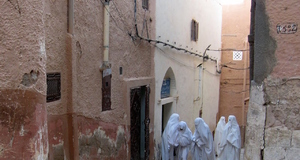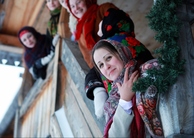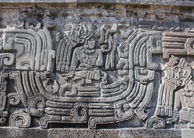Human Rights, Truth Commissions, and Anthropology in Latin America
By
2011, Vol. 3 No. 03 | pg. 1/2 | »
KEYWORDS:
In the aftermath of mass violence and terror, nations are left in a state of disillusionment, fear, and often a lack of state legitimacy. In this atmosphere many nations have resorted to using different forms of reconciliation and peace-building processes including the use of truth commissions. Scholars in the social sciences have debated the veracity of truth commissions, along with their success in restoring national legitimacy and reconciliation. Despite this, the use of truth commissions remains a popular tactic in peace-building processes and is also a part of the ongoing quest for the recognition of universal human rights. At the same time, anthropology as a discipline has shied away from taking on a significant role in studying the effects of mass violence on society and the reconciliation process. Even though anthropologists are uniquely situated to this field of study because of their background and expertise, their involvement has been complicated by ongoing debates surrounding cultural relativism and the role of the anthropologist in politics. Yet in the last few decades, anthropologists have continually taken on a larger role in the study of mass violence and human rights violations.As a whole, anthropologists have devoted little effort to studying mass violence and terror and even though they recently have begun embracing it as a legitimate area of study, little anthropological work has been completed (Sanabria 352). Yet systematic violence has been a common theme in much of Latin America and has affected the lives of millions of Latin Americans. By studying the social, political and cultural consequences of this violence on the lives of Latin Americans, anthropologists can inject an important analysis into the origins and consequences of mass violence and how nations and communities can move past it (Sanabria 384). However, the actual study of violence and terror is complicated by the dedication to cultural relativism. Cultural relativism and its commitment to understanding culture on its own terms is problematical in that it does not adequately address concerns with regard to human rights abuses. This had led to the recognition of a new form of cultural relativism—critical cultural relativism. Critical cultural relativism poses questions about cultural practices and whom they might be harming or helping and looks into issues of winners and losers and oppressors and victims (Sanabria 7). Adopting this view of anthropology allows anthropologists to move from being mere observers of culture to actually critically examining cultural, social and political constructions and practices. In fact, the adoption of critical cultural relativism is inherent in the intersection of anthropology, human rights and peace building. In the past, it has been suggested that anthropologists have had little influence on human rights despite that their work appears to be at the crossroads of human rights, particularly in Latin America (Messer 50). Yet in fact anthropologists have contributed in documenting the human rights conditions of many Latin American indigenous groups through testimony, research and advocacy and in so doing have called attention to areas often overlooked by other human rights organizations (Messer 50). The area that is lacking, however, is a basic construction of a cross-cultural understanding of human rights and how a diversity of interpretations of personhood and human rights vary from the universal understanding of human rights. The universal construction of human rights is guided by three major human rights law documents: the Universal Declaration of Human Rights (UDHR), the Covenant of Civil and Political Rights and the Covenant on Economic, Social and Cultural Rights (Messer 55). The UDHR is generally viewed as the foundation of current human rights discourse in the world and the other two documents are complementary to that document. The UN Office of the High Commissioner for Human Rights defines human rights as “rights inherent to all human beings, whatever our nationality, place of residence, sex, national or ethnic origin, colour, religion, language, or any other status” (Good 30). Additionally, the UDHR states that all humans are born free and equal in dignity and rights (Good 31). These three legal documents further define the individual rights to personal security, freedom from arbitrary violence by the state, freedom of speech, freedom of religion, freedom of movement and freedom to self-determination as basic rights (Messer 55). As international acceptance of these rights has grown post WWII and the Cold War, the issue has come up of how to respond to gross human rights violations and the perpetrators of the abuses. The need for human rights documentation and education has been realized as a way to prevent crimes against humanity. This calls up issues of memory and how victims and the victimizers themselves learn to misrepresent the past for their own goals. It is in this context that truth commissions have arose in post conflict situations. Truth commissions as a strategy to account for human rights violations really came into their own in the 1980s as a result of events in Latin America. In particular, the truth commission in Guatemala helped bring global attention to the subject of truth-seeking and documenting human rights violations. In general, truth commissions are defined by the following characteristics: they are temporary bodies created for a period of several years, they are officially sanctioned, they are non-judicial bodies with some de jure independence, they are usually created at a point of political transition, they focus on the past, they investigate patterns of abuses committed over a period of time, they focus on violations of human rights, and they generally conclude their work with the submission of a final report (Quinn and Freeman 1119). Under optimal conditions truth commissions can help establish the truth about the past, foster accountability for human rights violations, cultivate reconciliation, recommend victim reparations and reform, provide a public platform for victims, and inform the public debate while providing a safeguard against revisionism (Quinn and Freeman 1120). Unfortunately, often the high aims of truth commissions are marred by a weak civil society, political instability, fear of testifying and a weak or corrupt administration of justice. Additionally, a weak judiciary and lack of experience in judicial oversight of the constitutionality of government policy can make it difficult for domestic courts to stand up against the decisions of the executive or legislative branch to enact a blanket amnesty (Roht-Arriaza 314). Other weaknesses include the inability of some commissions to name the names of perpetrators and the limits of action that can be taken despite what the commission reveals. For example, in Argentina the Sabato Commission was set up to investigate disappearances but it later enacted de facto amnesty laws and eventually pardoned everyone that was convicted for their roles in “the dirty war” of the 1970s (Roht-Arriaza 313). Yet years later, the Argentine parliament repealed the due obedience and punto final laws that had resulted in de facto amnesty. In Guatemala, the UN-brokered peace agreement included a provision stating that the government would not impede prosecutions for human rights violations and then a year later Congress passed an amnesty law. However, this law included exceptions that prohibited amnesty for disappearances, torture and genocide (Roht-Arriaza 314). Lastly, in Chile the Aylwin doctrine allowed courts to investigate disappearances up to the point that the court could determine if a crime coming within the terms of amnesty had been committed (Roht-Arriaza 315). These three instances show that although countries have been able to resist complete blanket amnesty, courts are still limited in bringing about full accountability and prosecution. Truth commissions are particularly important in Latin America because of its devastating history of violence. In Guatemala, the state was pitted against predominantly Maya guerillas and civilians, resulting in the death of over 150,000 Maya and the displacement of one million Guatemalans (Sanabria 357). Most of the fighting during this conflict took place in the Maya western highlands where two Marxist guerilla organizations, the Guerrilla Army of the Poor and the Revolutionary Organization of People in Arms emerged in the late 1960s. Guatemala had long been characterized by political authoritarianism, economic exploitation and social inequality. However, in 1944 the October Revolution overthrew the military dictator Jorge Ubico and brought about the election of Juan José Arévalo. During his time as president he began to implement reforms including agrarian reforms, the legalization of labor unions, and social security provisions (Handy 1984). In this context, the United States and its fear of communist influence and desire to protect the United Fruit Company orchestrated a coup and installed Carlos Castillo Armas as president. Many argue that Armas’ dismantling of the democratic reforms and the return to inequality helped lead to the guerilla movement in the 1960s (Stewart 235). The guerrilla movement began with the unsuccessful coup d’état led by left-leaning military officers in 1960s. Although the attempt was swiftly suppressed it gave birth to several leftist opposition groups that engaged in violence throughout the decade. In 1965, the government began a counterinsurgency program that eliminated guerilla leaders as well as others that they identified as suspect including unions, students, progressive Catholic clergy and educators (Barry 1992). Throughout the 1970s the guerillas began to focus on educating and organizing rural, indigenous populations leading to the “Scorched Earth” counter-insurgency campaign of the early 1980s. During 1981 and 1983 the military killed 200,000 civilians, massacred 626 villages and tortured and repressed tens of thousands (Stewart 236). In order for the armed forces to carry out these massive killings they relied upon civilian personnel, organized into Civil Defense patrols. These were local paramilitary groups trained to defend their communities against guerrilla subversion. Although the guerrillas committed atrocities as well, the REMHI report commissioned by the Guatemalan Catholic Church’s Human Rights Office notes that the armed forces and its paramilitary civil patrols were responsible for over 90 percent of the massacres (Sanabria 358). By 1996, when the conflict ended over 1.5 million people were displaced (Stewart 236).Continued on Next Page » Suggested Reading from Inquiries Journal
Inquiries Journal provides undergraduate and graduate students around the world a platform for the wide dissemination of academic work over a range of core disciplines. Representing the work of students from hundreds of institutions around the globe, Inquiries Journal's large database of academic articles is completely free. Learn more | Blog | Submit Latest in Anthropology |


















